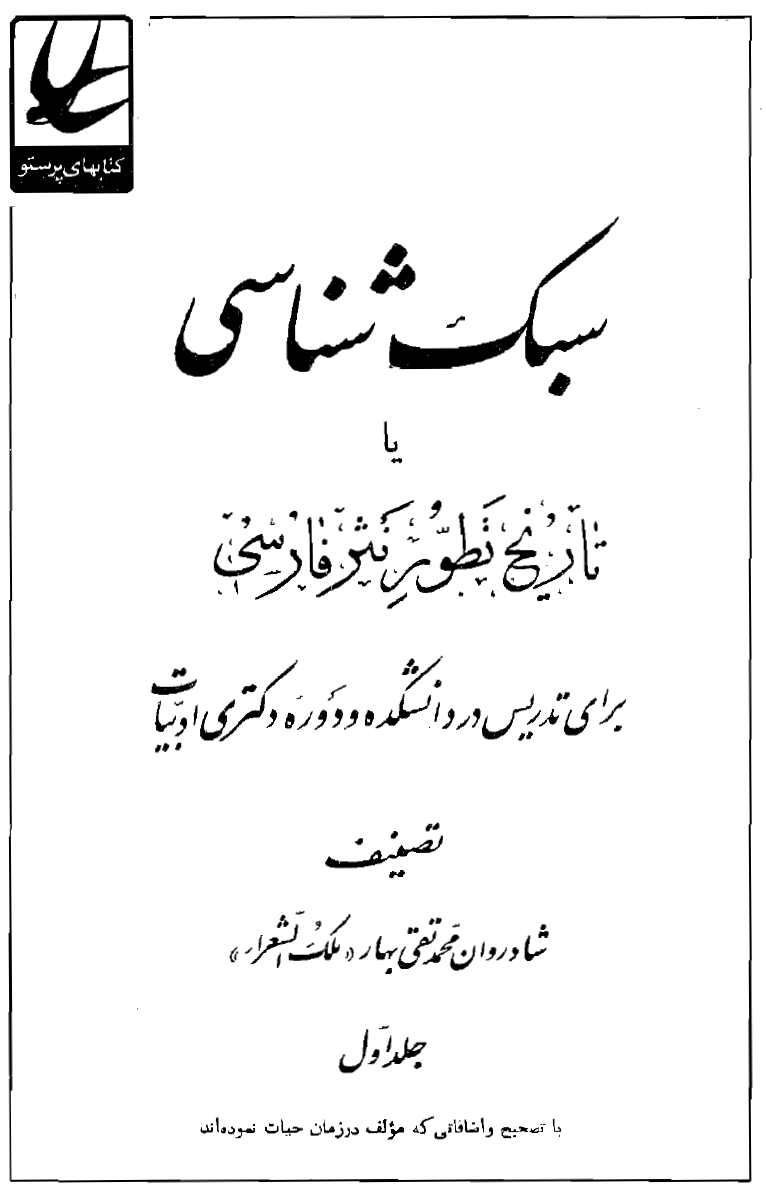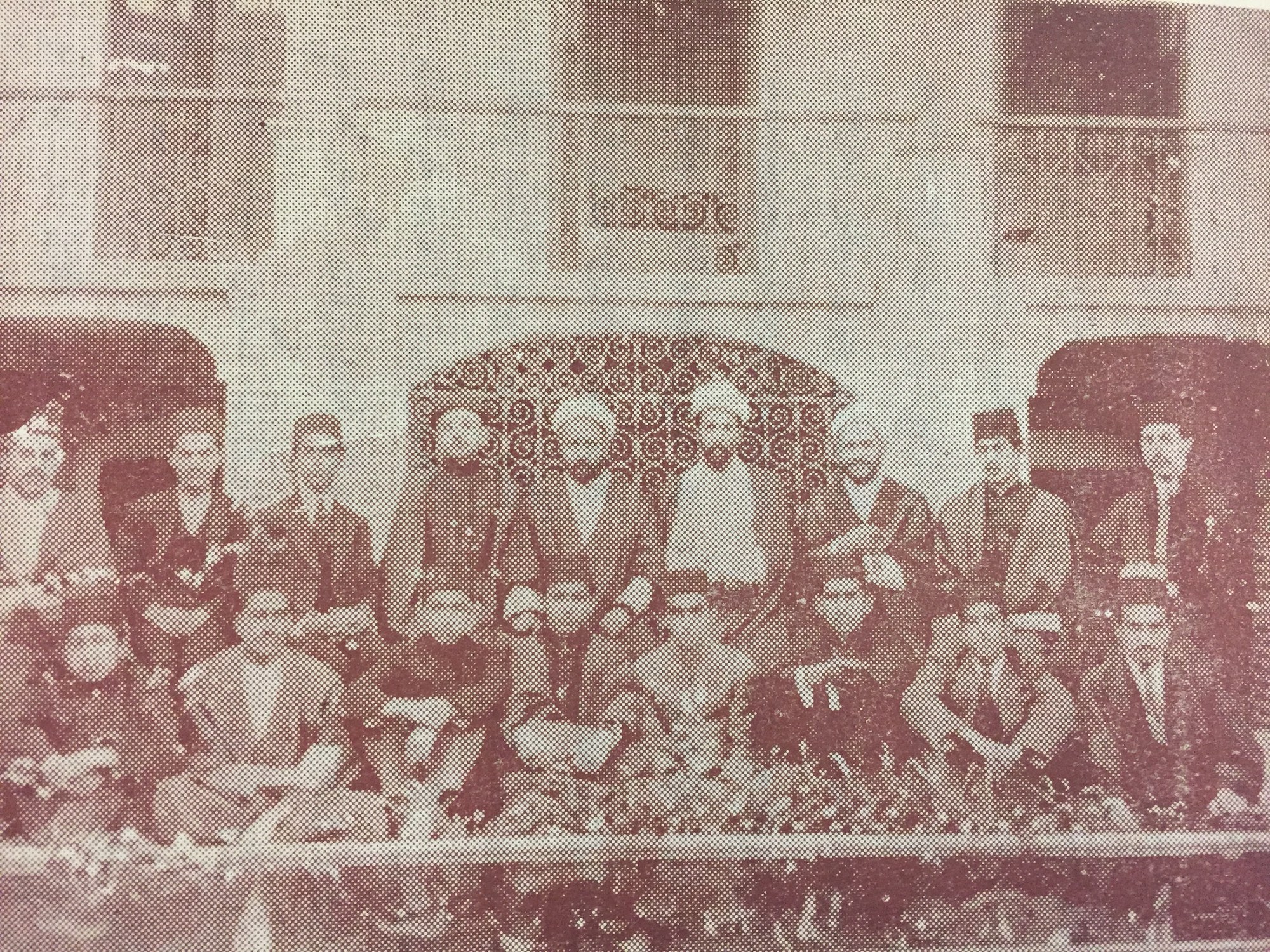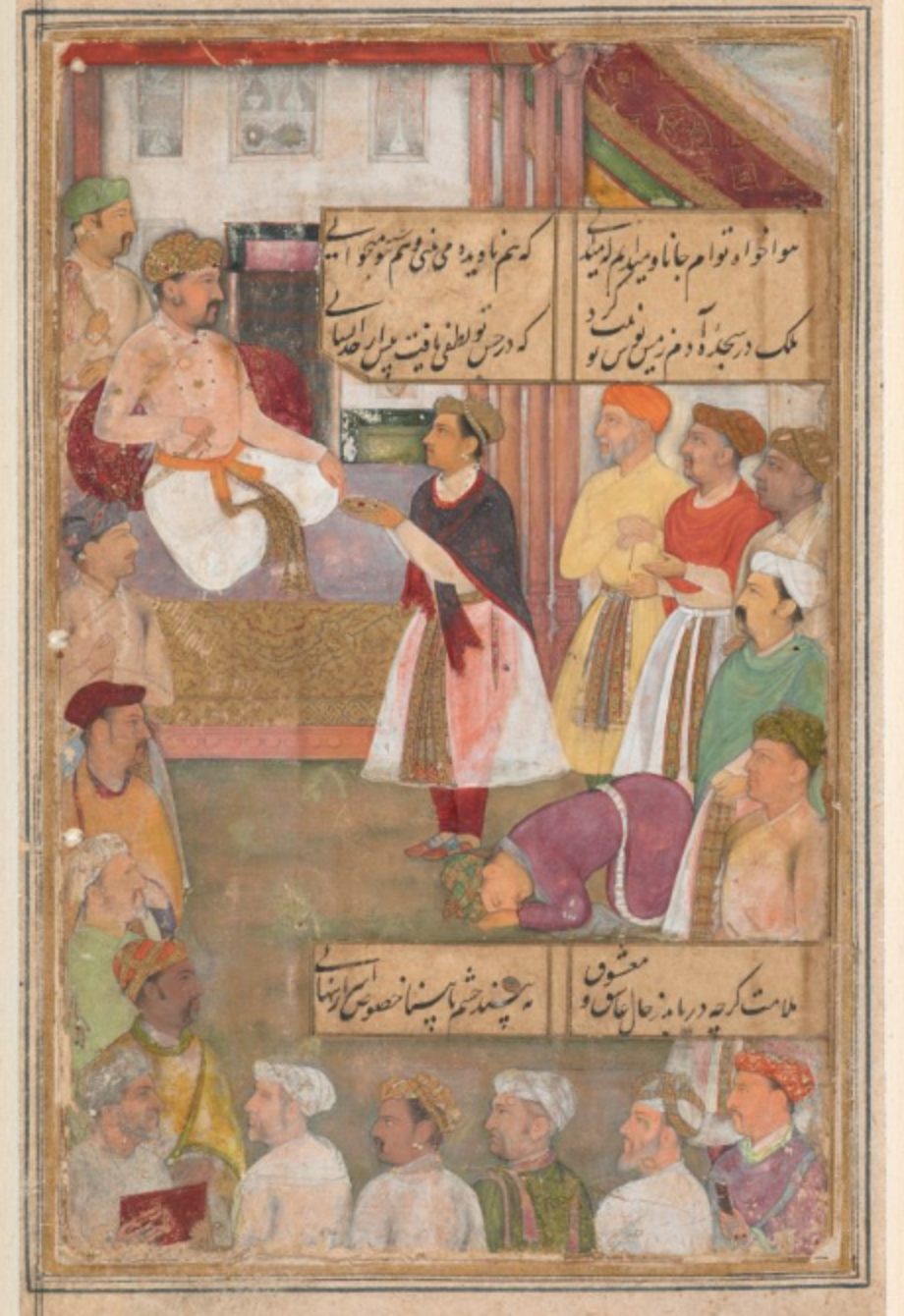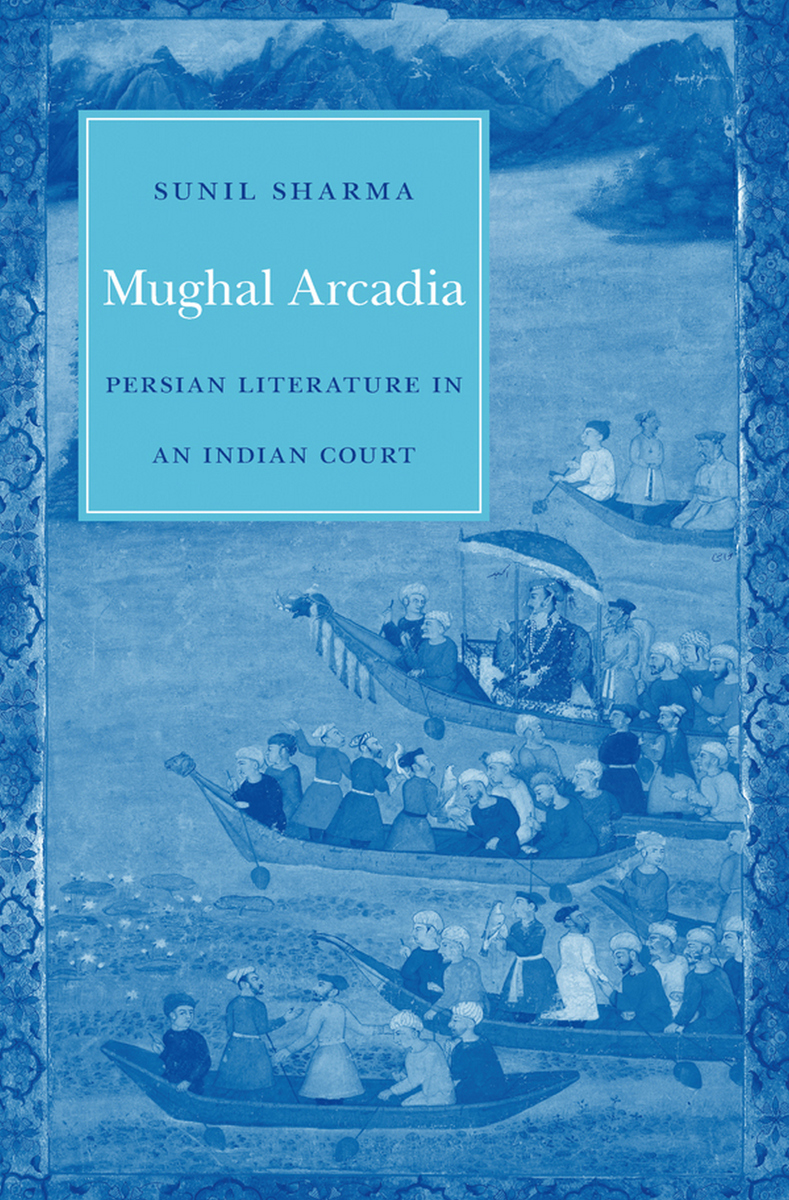Aria Fani is currently completing a doctoral dissertation at U.C. Berkeley titled “Creating Persian Literature: Sites of Power and Literary Production in Early Twentieth-century Iran and Afghanistan (1860-1960).”

The early twentieth-century invention of sabk or style as a way to periodize the Persian language has been one of the most consequential and enduring trends of Persian literary history. The study of style has posited the simplistic notion that Persian literary production may be periodized into four self-contained and regionally-identified entities: the Khorasani, ‘Eraqi (Iraqi), Hendi (Indian), and Bazgasht (Return) styles. Since the institutionalization of Persian literature in the 1930s and 1940s in Iran and Afghanistan, these nebulously-defined entities have emerged as omnipresent pillars of Persian literary history. In the latter part of the twentieth century, these invented periods were used as categories of analysis thus turning the notion of style into a self-fulfilled prophecy.
Every student of Persian literature, studying virtually anywhere in the world, learns Persian literary history according to its constructed narrative: Khorasani and ‘Eraqi styles mark the golden age of Persian poetry, Sabk-e Hendi or the Indian Style is characterized by a period of literary decline and the Literary Return movement was a uniquely Iranian attempt at returning Persian poetry to its lost glory. Each period may have been posited as self-contained, but they all draw from a shared idiom of myth-making. In recent years, many scholars have begun to challenge the idea of literary style both as a historiographical marker and a category of analysis. That said, there is a long way to go in displacing this mythologized narrative of Persian literary history for it operates as a monumental institution.
Sunil Sharma’s recent book, Mughal Arcadia: Persian Literature in an Indian Court (Harvard University Press, 2017), is a scholarly yet accessible account of Persian literary culture in the sixteenth and seventeenth centuries in South Asia. Mughal Arcadia participates in re-evaluating the literary production of what is often — for lack of a better term — called the premodern world of Persian literature. Before I delve into the book, it is important to explain why it complicates notions of linguistic “simplicity,” posited as a manifestation of imagined authenticity, and re-evaluates the common Iranian understanding of premodern Persian literature as a period of literary “decline.” Sharma’s timely book gives occasion to discuss the way in which Persian literature has been periodized and mythologized.
The Narrative of a Lost Authenticity
What set the stage for the invention of nineteenth- and twentieth-century myths about the “Indian Style” of Persian poetry? The attitudes of South Asians toward their Persian literary heritage dramatically changed in the nineteenth century, primarily as a result of colonialism. The British colonial institution viewed India’s multilingual society as a civilizational problem (as opposed to a civilizational feature) and berated Indians for not having a standard language, one that would transcend all ethnic and linguistic communities. For centuries, Persian had served as a lingua franca of political administration, but British colonial agents identified it as a “foreign” language in India, tied to the culture of “Muslim” rulers in a “Hindu” land. The British had very clear ideas about who was a Muslim and who was a Hindu and the separate cultural domains to which each had to belong (thus, “Muslim” and “Hindu” placed in quotation marks).
The colonial experience in South Asia gave rise to a shift in attitude exemplified by Muhammad Husain Azad’s history of Urdu poetry called Ab-e Hayat (Water of Life), composed in 1880. Azad created a narrative in which the genesis of Urdu poetry is marked by its “simplicity” and nourishment by Persian. But as Urdu borrowed “too much” from Persian, the misguided influence of the latter made Urdu decadent. Half a century later in Iran, Mohammad Taqi Bahar invented a similar history of Persian literature in his Sabk-shenasi (Stylistics). In it, he argued that “simplicity” marked the genesis of Persian prose which was later corrupted by Arabic’s misguided influence. In fact, the amount of Arabic words and grammar in Persian informed the way Bahar periodized the history of Persian prose.

By opting for the title “Sabk-shenasi,” Bahar attempted to signal an epistemic departure from tazkerehs or biographical anthologies which constituted a major source text of modern literary histories. Bahar did not opt for majma‘ (gathering), tazkereh (commemorative anthology), montakhab (selection), safine (ark), or golshan (garden) in his title, he chose “Sabk-shenasi” to embed his study in an early twentieth-century discourse of positivist and scientific scholarship, as evident in the suffix shenasi (an act of acquiring knowledge). He wanted to communicate that he was not just “gathering” information, he was producing knowledge. As seen by Bahar, Stylistics was not just a historical survey of Persian literary prose, it invented an object of knowledge called “Persian literature.” The term tarikh or history also appears in the subtitle of Stylistics which is the other component of Bahar’s project: to invent a linear narrative of Persian literary prose steeped in philological iterations of Iranian nationalism.
Myth-making, an integral feature of “premodern” literary and historical production, is never ruptured by the self-proclaimed positivist framework of Bahar’s Stylistics. To quote David Perkins, Bahar and Azad both aimed to produce “useful fiction about the past,” one of the main functions of literary history. Calling Bahar a tazkereh writer would have been a great insult to him for hagiography was increasingly viewed in early twentieth-century Iran as an absence or suspension of objectivity, hence “unmodern.” Nonetheless, Bahar and Azad relied on myth-making even as they tried to marginalize tazkereh writing, a tradition that they falsely viewed as static and transhistorical. There is a vital caveat to this discussion: laying bare Bahar’s employment of myth-making does not diminish or negate the importance of the rhetorical moment ushered by his Stylistics in twentieth-century Persian literary culture. In fact, Bahar was among a global constellation of figures engaged in creating a scholarly landscape designed to open the door to a generation of scholars to further expand his network of myth-making.

Local Literary Historians, Globally at Work
Both Bahar and Azad, I argue, used “simplicity” as a narrative device in order to effectively invent an account of Persian and Urdu literary histories aligned with their cultural ideology and political ideals. Arabic functioned in Stylistics similar to the way Persian functioned in Azad’s Ab-e Hayat: an imagined deviation from a lost simplicity. Similar examples may be found elsewhere in the region during the nineteenth and twentieth centuries. In the end of the nineteenth century, Jurji Zaydan, the influential Arabic-language modernizer, strived to create a national literary history (as opposed to Islamic) whereby the Arabic language was the proposed common denominator for all peoples from Algeria to Iraq. Zaydan flagged what he identified as the influence of Turkish and Persian-speaking literary cultures as misguided. Inventing myths of national literature is not a unique feature of Near Eastern or South Asian literary modernities. For instance, the reification of Andalusia as “Islamic Spain” and the deification of Castilian at the expense of other Iberian languages in the nineteenth and twentieth centuries were invented myths of Spanish literary history.
How does this historical background matter for our understanding of sixteenth- and seventeenth-century Persian literature? Azad, Zaydan, and Bahar may have been working to nationalize their respective literary traditions, but they all subscribed to a shared set of tools and idioms developed and circulated on a multilingual global stage. When studied side by side, the shared literary idiom of Azad, Zaydan, and Bahar in which “simplicity” and “decline” are cultivated as devices to invent a certain type of national literary narrative becomes particularly crystallized. In the case of Bahar, one part of his Stylistics is the idea of a Persian literary “simplicity” lost to the “aesthetic decadence” of what he called Sabk-e hendi or the Indian Style. Bahar is one of the major voices who framed the sixteenth and seventeenth centuries in Persian as a period of literary decline.
Azad and Bahar came to conclusions that have for decades been uncritically accepted and perpetuated. In the past two decades, “simplicity” and “decline,” as vague and problematic categories of analysis, have been critiqued. Scholars have scrutinized these long standing categories by asking questions like this: How does Bahar’s Stylistics fit into the early twentieth-century national discourse of history writing in Iran? While scholars of the modern period have shown the ways in which Azad and Bahar were responding to political questions and anxieties alien to the previous centuries, other scholars have produced more critical accounts of premodern Persian literary culture. Mughal Arcadia is one such example. It broadly addresses the following questions: How did Persian poetry function in Mughal India? In what ways did Persian literary culture differ in India compared to that of West and Central Asia?
A Courtly Culture Entangled with Persian Poetry

There are two periods that broadly mark Persian’s literary career in Mughal India. During the first period, the Mughals came into power in the early sixteenth century and encountered a pre-existing Persian literary heritage established by the Delhi Sultanate. Culturally and politically, they embodied the Persian literary heritage and strengthened its position as a language of cultural importance, literary production, and bureaucracy. The Mughals heavily relied on a class of Persian-speaking poets, scholars, and tutors to participate in their cultural enterprise. They attracted a large number of Iranian and Central Asian émigrés. During this first period, it was the Iranian émigrés who controlled cultural and literary conversations at the court, and many Indian-born poets struggled to set linguistic and aesthetic standards.
The late seventeenth-early eighteenth centuries mark the beginning of the second period, as Indian-born poets began to be favored over Iranian poets, in no small part due to the rise of South Asian literary vernaculars such as Deccani and Rekhta (later named Urdu). Under British rule (1858-1947), Indians gradually lost confidence in their Persian skills and identified Iran as the source of Persian literary authority. In spite of this shift in attitude, Persian literary production continued in nineteenth- and early twentieth-century India, as exemplified by the volume of Persian-language texts published by the Naval Kishore Press alone (established in 1858).
Mughal Arcadia primarily tells the story of the first period of Persian’s literary career in South Asia, in which Iranian émigrés enjoyed the upper hand compared to Indian-born poets. The first chapter provides a general sketch of Mughal literary culture in which we learn that Persian was central to the way the Mughals projected their imperial image both locally and transregionally. The Mughals were merely heirs to a pre-existing tradition of Persian poetry, as illustrated by the figure of Amir Khusraw of Delhi (d. 1325) whose work was a significant model of literary inspiration for sixteenth- and seventeenth-century poets.
Sharma captures the cultural openness in premodern South Asia that accommodated a variety of outsiders with different linguistic and ethnic backgrounds; as such, India became widely regarded as dar al-aman or the “abode of peace.” In this environment of relative tolerance and cultural civility, Persian poetry flourished as a result of wide ranging networks of patronage and its interplay with Sanskrit, Arabic, Turkish, Braj, and other literary traditions that were present in north India during different periods. Persian poetry as a cultural enterprise also created fierce rivalries among poets. The divergent views of Indian-born poets and Iranian émigrés on place served as one of the defining tensions that informed Persian poetic production in this period.
The second chapter traces how India became a home for the Mughals, or variously put, how India accommodated a group of outsiders—Turkic, Persian-speaking and Muslim—who traced their lineage back to Timur (d. 1405). Sharma shows how the Mughals became Indianized within two generations of their arrival from Central Asia, and Persian remained the locus through which they articulated their cultural heritage. Persian poetry brought to South Asia a stock set of metaphors and images that dovetailed well with South Asian aesthetic norms and took on Indic characteristics over the years. In short, South Asian literary cultures changed the way Persian poets perceived their aesthetic possibilities. “One consequence of this,” Sharma writes, “was that Mughal poets no longer felt constrained in describing idealized gardens and assemblies that were frozen in time, for not every garden in the Persianate world was the proverbial rose garden inhabited by nightingales.” As the Mughals traveled and explored India’s natural wonders, Persian poets turned to places like Kashmir to cultivate their poetic paradise.
Celebrating Urban Centers

One of the ways in which the Mughals came to call India home was by celebrating South Asian cities, a practice reflected in Persian poetry. The Mughal celebration of cities was also a way of projecting their imperial growth and wealth to regional empires, primarily the Safavids. Chapter three deals with how Mughal poets appropriated existing poetic forms and genres to write about place. This literary practice was not limited to north India, the seat of Mughal power, but was extended to the provinces and local courts where poets exercised more freedom in experimenting with linguistic registers and themes.
One important figure was ‘Abdur-Rahim Khan-e Khanan, who was a generous patron of Persian and Braj poetry. Mixing Persian and Indic sensibilities, he composed Braj poetry on the beauty of Indian cities. Kalim is another figure who continued the practice of poetry about place as a senior poet at Shah Jahan’s court. The poetic awareness of place, Sharma argues, marks a major feature of Persian poetry in Mughal India.
The trend of using cities as a locus for urban energy, enjoyment and aesthetic pleasure existed way before the Mughals in different literary cultures. What Mughal Arcadia focuses on is how this poetic brand was reformulated in an Indian court during the sixteenth and seventeenth centuries. Mughal poets referenced a number of South Asian cities, and among these references, Sharma argues that Kashmir was central to the construction of the Mughal “Arcadia,” an idealized place that offers peace and harmony. Poets such as Kalim, Shah Jahan’s poet laureate, composed many verses on Kashmir’s climate, mountains, rivers, and gardens. Qudsi was another poet at the court of Shah Jahan who composed poems on Kashmir and also eulogized his patron. Mughal Arcadia, designed to boast of how well South Asian cities were doing under the Mughal rule, was part of a web of literary inventions directed at their imperial rivals.
In his conclusion, Sharma argues that the Mughal Arcadia, and by extension the metaphor of Kashmir as a paradise, became ossified during the reign of Aurangzeb (r. 1658-1707) as the last Mughal Emperor showed little interest in Persian poetry, and as the last trip of a Mughal emperor to Kashmir took place in 1663. It is an unsatisfying conclusion to an outstanding study — did Aurangzeb abandon the cultivation of Persian poetry altogether as a Mughal cultural enterprise? Or in other words, did Persian poetry drastically decline only because Aurangzeb refused to provide poets with patronage?
Conclusion: Remembering to Forget

While the book has to end somewhere, the story continued as Indian-born poets gained control of the cultural conversations and began to outshine Iranian émigrés. Sharma’s accessible and erudite study tells the story of Persian poetry and its social domain in Mughal India. His book examines a period in which Persian poetry was highly inflicted by the literary contributions of Iranian émigrés who were largely unchallenged by their Indian rivals.
Such categories of analysis as “Indian-born poet” or “Iranian émigré” — or “premodern” and “early modern” as even more nebulous and problematic categories — will continue to be grounded in more contingencies such as class, caste, ethnicity, and linguistic register in light of ongoing efforts to recover the emic terms with which sixteenth- and seventeenth-century poets qualified and discussed notions of aesthetic change and literary authority. Sharma paves a path with anachronistically placed signposts. Overall, Mughal Arcadia succeeds in painting a nuanced picture of this period in which Persian poetry functioned as a valued currency of the Mughal cultural enterprise. It enabled the Mughals to bring local and transregional poets to participate in their imperial project.
At the South Asian bazaar for Persian poetry, poets displayed their linguistic skills and sought different types of patronage that extended well beyond the Mughal court. Based on these characteristics, the sixteenth and seventeenth centuries mark one of the most dynamic and exciting periods of Persian literary culture. Bahar’s characterization of this period as one of “decline” is ahistorical or we can even say cartoonish; it satisfies a set of modern political and cultural anxieties that did not exist in the age of Kalim, Abdur-Rahim Khan-e Khanan, and a constellation of other Persian poets and patrons active in the sixteenth and seventeenth centuries across the Persianate World. In his previous works, Sharma had critically introduced the work of Persian poets in South Asia and laid bare the cultural mechanism through which the invented narrative of Persian literary history operated as a mode of remembrance designed to forget Persian literary production in India. Writing Mughal Arcadia was a natural next step in his scholarly career, one that requires us to revisit — if not entirely reconceptualize — Persian literary history in its wake.
I am thankful to Munis Faruqui, Ahmad Karimi-Hakkak, Arthur Dudney, Anurag Advani, and Mariam Sabri for their comments on this essay.
Bibliography (secondary sources)
Abdur-Rahim Khan-e Khanan’s legacy
– Hossain, Shakeel, and Allison Busch. Celebrating Abdur Rahim Khan-i-Khanan: Statesman, Courtier, Soldier, Poet, Linguist, Humanitarian, Patron. Switzerland: Aga Khan Trust for Culture, 2017.
– Lefevre, Corinne. “The Court of ‘Abd-Ur-Rahim Khan-i Khanan as a Bridge Between Iranian and Indian Cultural Traditions,” In Culture and Circulation: Literature in Motion in Early Modern India. Ed. Thomas de Bruijn and Allison Busch, Leiden: Brill, 2014, pp. 75-106.
Bahar’s Stylistics
– Roxane Haag-Higuchi’s “Modernization in Literary History: Malek al-Sho‘ara Bahar’s Stylistics,” In Culture and Cultural Politics Under Reza Shah. Ed. Bianca Devos and Christoph Werner, New York: Routledge, 2014, pp. 19-36.
– Ahmadi, Wali. “The Institution of Persian Literature and the Genealogy of Bahar’s Stylistics.” British Journal of Middle Eastern Studies, Vol. 31, No. 2 (2004): 141-152.
Muhammad Husain Azad
– Pritchett, Frances W. Nets of Awareness: Urdu Poetry and Its Critics. Berkeley: University of California Press, 1994.
Jurji Zaydan
– Philip, Thomas. Gurgi Zaidan: His Life and Thought. Wiesbaden: Franz Steiner, 1979.
Persian literary culture in South Asia
– Kinra, Rajeev. Writing Self, Writing Empire Chandar Bhan Brahman and the Cultural World of the Indo-Persian State Secretary (Oakland, California: University of California Press, 2015).
– Dudney, Arthur. A Desire for Meaning: Ḳhān-i Ārzū’s Philology and the Place of India in the Eighteenth-Century Persianate World (Ph.D. Dissertation, Columbia University, 2013).
On the connection between tazkerehs and literary history and myths of Persian and Urdu’s origins
– Jabbari, Alexander, Late Persianate Literary Culture: Modernizing Conventions between Persian and Urdu (Ph.D. Dissertation, University of California, Irvine, 2017).
Literary history
– Perkins, David. Is Literary History Possible? (Baltimore: Johns Hopkins University Press, 1992), 182.
– Rios-Font, Wadda. “Literary History and Canon Formation.” Ed. David T. Gies. The Cambridge History of Spanish Literature (Cambridge, UK: Cambridge University Press, 2004).
– Sharma, Sunil. “Redrawing the Boundaries of ‘Ajam in Early Modern Persian Literary Histories.” In Iran Facing Others: Identity Boundaries in a Historical Perspective, edited by Abbas Amanat and Farzin Vejdani (New York: Palgrave Macmillan, 2012) 51–64.
– Alexander Jabbari, “The Making of Modernity in Persianate Literary History” (Comparative Studies of South Asia, Africa and the Middle East, Vol. 36, No. 3, 2016) 418-434
– Kevin Schwartz, Bāzgasht-i Adabi (Literary Return) and Persianate Literary Culture in Eighteenth and Nineteenth Century Iran, India, and Afghanistan (Unpublished doctoral dissertation, University of California, Berkeley, 2014).












1 comment
“The study of style has posited the simplistic notion that Persian literary production may be periodized into four self-contained and regionally-identified entities: the Khorasani, ‘Eraqi (Iraqi), Hendi (Indian), and Bazgasht (Return) styles. ”
Is it “Eraqi” as in “interior” (of Iran)?